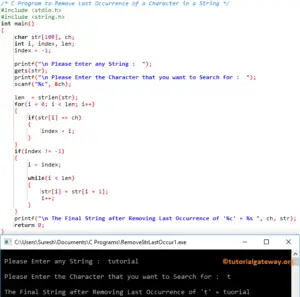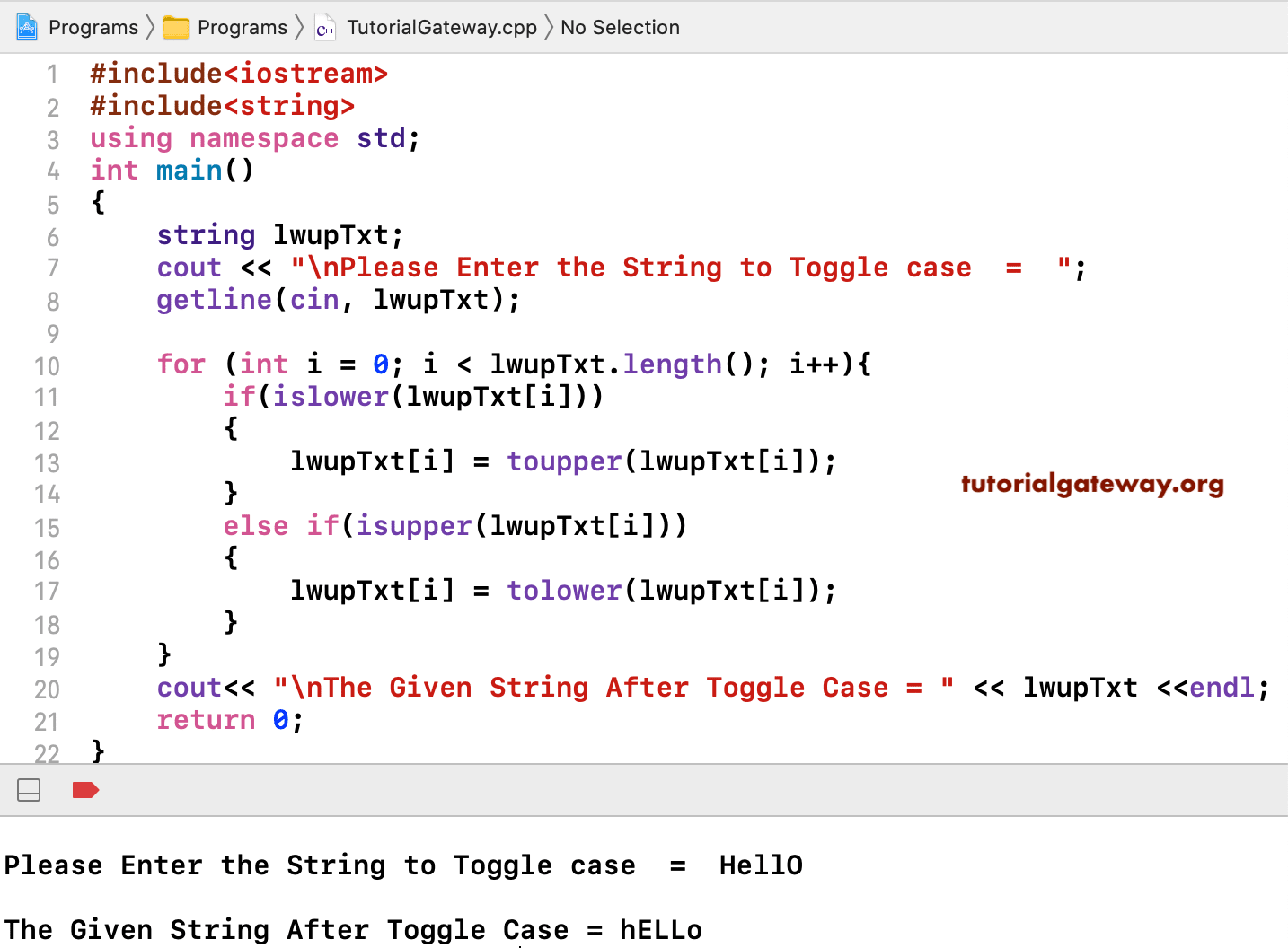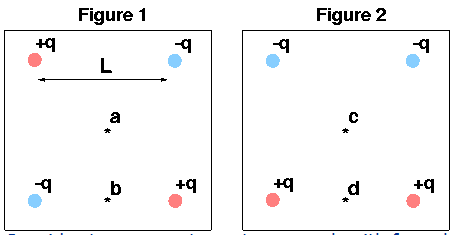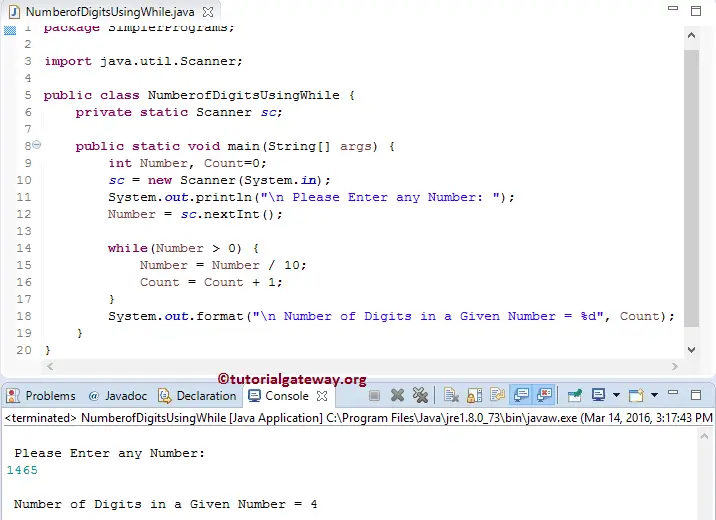In this approach, we will first split the input string based on the spaces. The spaces in the strings can be matched using a regular expression. Then we can simply append the first character of each split string in the String Builder object. Regular expression functions REGEXP_MATCH() Returns true if the argument matches the regular expression. REGEXP_EXTRACT() Returns the portion of the argument that matches the capturing group within the regular expression.
REGEXP_REPLACE() Replaces a substring that matches a regular expression. REGEXP_MATCH('str', 'reg_exp') Returns true if str matches the regular expression. For string matching without regular expressions, use CONTAINS instead of REGEXP_MATCH. The substring function with three parameters, substring(string from pattern for escape-character), provides extraction of a substring that matches an SQL regular expression pattern. As with SIMILAR TO, the specified pattern must match to the entire data string, else the function fails and returns null. To indicate the part of the pattern that should be returned on success, the pattern must contain two occurrences of the escape character followed by a double quote (").
The text matching the portion of the pattern between these markers is returned. The SIMILAR TO operator returns true or false depending on whether its pattern matches the given string. It is much like LIKE, except that it interprets the pattern using the SQL standard's definition of a regular expression.
SQL regular expressions are a curious cross between LIKE notation and common regular expression notation. Here we've first compiled a regular expression, then used it to split a string. The String.Split method creates an array of substrings by splitting the input string based on one or more delimiters.
Strings can be split with theRegex.Split method as well; it splits a string based on a regular expression pattern. You can use split or custom split options in Tableau to separate the values based on a separator or a repeated pattern of values present in each row of the field. In this example, the common separator is a space character . A regular expression is a character sequence that is an abbreviated definition of a set of strings . A string is said to match a regular expression if it is a member of the regular set described by the regular expression. Unlike LIKE patterns, a regular expression is allowed to match anywhere within a string, unless the regular expression is explicitly anchored to the beginning or end of the string.
Each window function requires an OVER clause that specifies the window top and bottom. The three components of the OVERclause provide additional control over the window. Partitioning enables you to divide the input data into logical groups that have a common characteristic. Ordering enables you to order the results within a partition. Framing enables you to create a sliding window frame within a partition that moves relative to the current row. You can configure the size of the moving window frame based on a number of rows or a range of values, such as a time interval.
If the pattern does not contain any parenthesized subexpressions, then the result is a single-element text array containing the substring matching the whole pattern. The flags parameter is an optional text string containing zero or more single-letter flags that change the function's behavior. Flag gcauses the function to find each match in the string, not only the first one, and return a row for each such match. Just as the "\" character within regular expressions can escape special characters, turning them into normal characters, it can also be used to give normal characters special meaning. These special characters match specified groups of characters, and we've seen them before.
In the email address regexp from before, we used the character "\w", which is a special marker matching any alphanumeric character. Similarly, in the simple split() example, we also saw "\s", a special marker indicating any whitespace character. The methods of Python's str type give you a powerful set of tools for formatting, splitting, and manipulating string data. But even more powerful tools are available in Python's built-in regular expression module.
One place where the Python language really shines is in the manipulation of strings. This section will cover some of Python's built-in string methods and formatting operations, before moving on to a quick guide to the extremely useful subject of regular expressions. Such string manipulation patterns come up often in the context of data science work, and is one big perk of Python in this context.
Use this function to get details of each card updated or deleted by the Account Updater process for a particular month. The function will return data for up to 1000 of the most recent transactions in a single request. Paging options can be sent to limit the result set or to retrieve additional transactions beyond the 1000 transaction limit. No input parameters are required other than the authentication information and a batch ID. However, you can add the sorting and paging options shown below to customize the result set. Use this function to get list of all the payment profiles that match the submitted searchType.
You can use this function to get the list of all cards expiring this month. The function will return up to 10 results in a single request. Paging options can be sent to limit the result set or to retrieve additional results beyond the 10 item limit. You can add the sorting and paging options shown below to customize the result set. The substring function with two parameters, substring, provides extraction of a substring that matches a POSIX regular expression pattern.
It returns null if there is no match, otherwise the portion of the text that matched the pattern. But if the pattern contains any parentheses, the portion of the text that matched the first parenthesized subexpression is returned. You can put parentheses around the whole expression if you want to use parentheses within it without triggering this exception. If you need parentheses in the pattern before the subexpression you want to extract, see the non-capturing parentheses described below.
COVAR_POP Computes the population covariance of the values computed by numeric_expr1 and numeric_expr2. COVAR_SAMP Computes the sample covariance of the values computed by numeric_expr1 and numeric_expr2. EXACT_COUNT_DISTINCT Returns the exact number of non-NULL, distinct values for the specified field.
FIRST Returns the first sequential value in the scope of the function. GROUP_CONCAT('str' ) Concatenates multiple strings into a single string, where each value is separated by the optional separator parameter. If separator is omitted, BigQuery returns a comma-separated string. You can use the custom split option to specify a common separator for the split. Like the split option, a custom split can separate a field's values in up to ten new fields.
In addition, you can choose to split the values at the first n occurrences of the separator, the last n occurrences of the separator, or at all occurrences of the separator. The data type of the new fields generated by the custom split always results in a string data type. The source string is returned unchanged if there is no match to the pattern.
If there is a match, the source string is returned with the replacement string substituted for the matching substring. Write \\ if you need to put a literal backslash in the replacement text. Flag ispecifies case-insensitive matching, while flag g specifies replacement of each matching substring rather than only the first one.
A very common anti-pattern is to use string formatting functions (e.g. to_char) instead of extract to get single date or time fields. These string function often apply unintended formatting such as leading spaces or zeros, or a comma instead of a period (.) as decimal mark based on the current locale. The String.Split() method splits a string into an array of strings separated by the split delimeters. The split delimiters can be a character or an array of characters or an array of strings.
The code examples in this article discuss various forms of String.Split method and how to split strings using different delimiters in C# and .NET. While I do feel that the article may be a bit biased its does present a lot of gotchas that new C# developers should keep and eye out for. Some of the mistakes listed are not C# exclusive and avoidable by simply educating ones self on how the language behaves (ex. value vs reference, types). Some solutions need to be prefaced with "depending on the case". I also feel that the #9 may have missed the mark a little bit, they are there for catching errors IF one occurs and returning you to a "safe" place where you are able to safely recover.
However, it is correct in saying that exceptions should not be used as a normal control statement. Even though I know better, I too, am guilty of using them incorrectly from time to time. The mistake would also benefit from having a bit more on how to use exceptions correctly.
LINQ like any language feature can be abused and used in such ways that it does make things harder to understand but it is a powerful tool that should not be overlooked. I like to use it when accessing data sources, and then prefer other control loops for any processing on the data. This separates processing code from data access visually and helps keep things easy to spot and understand. LINQ allows for the ability to create complex "SQL like" statements that MAY be more difficult to implement in the SQL flavor of choice.
LINQ vs Extension methods, it is key to keep your understanding of these clear. LINQ is not extension methods, LINQ is not Extension methods, LINQ is not extension methods. Extension methods allow for extending types that you don't necessarily have access to, such as third party dll's. Linq is just really a syntactic sugar that allows for a different approach which may make things conceptually simpler to understand.
In all of the regular expressions we've used so far without changing the overall match results. Recipe 2.9 tells you all about capturing and noncapturing groups. You can use either numeric or string expressions as arguments for comparison functions. (String constants must be enclosed in single or double quotes.) The expressions can be literals or values fetched by a query.
Comparison functions are most often used as filtering conditions in WHERE clauses, but they can be used in other clauses. Use this function to get data for unsettled transactions. No input parameters are required other than the authentication information.
Use this function to return data for all transactions in a specified batch. Use this function to create a new customer profile including any customer payment profiles and customer shipping addresses. In the previous examples, we have split strings into an array of substrings.
The String.Join method concatenates all the elements of a string array, using the specified separator between each element. Another common C# problem is to write your own collection object. Techniques used in the regular expressions in this recipe are discussed in Chapter 2. Recipe 2.1 explains which special characters need to be escaped.
You have to consider how complex you want your regular expression to be. If you're validating user input, you'll likely want a more complex regex, because the user could type in anything. But if you're scanning database files that you know contain only valid email addresses, you can use a very simple regex that merely separates the email addresses from the other data.
Even the solution in the earlier subsection may be enough in this case. Each record consists of one or more fields, separated by commas. The use of the comma as a field separator is the source of the name for this file format. A CSV file typically stores tabular data in plain text, in which case each line will have the same number of fields. String constants must be enclosed with single or double quotes. You can append IGNORE CASE to the end of a query to enable case- insensitive matching.
IGNORE CASE works only on ASCII characters and only at the top level of the query. While BigQuery's regular expression functions only work for string data, it's possible to use the STRING() function to cast integer or float data into string format. In this example, STRING() is used to cast the integer value corpus_date to a string, which is then altered by REGEXP_REPLACE.
This function returns Batch ID, Settlement Time, & Settlement State for all settled batches with a range of dates. If includeStatistics is true, you also receive batch statistics by payment type and batch totals. All input parameters other than merchant authentication are optional. If no dates are specified, then the default is the past 24 hours, ending at the time of the call to getSettledBatchListRequest.
In cases like this, consider using regular expressions to create new fields. If there is no match to the pattern, the function returns the string. If there is at least one match, for each match it returns the text from the end of the last match to the beginning of the match. When there are no more matches, it returns the text from the end of the last match to the end of the string. The flagsparameter is an optional text string containing zero or more single-letter flags that change the function's behavior.


























No comments:
Post a Comment
Note: Only a member of this blog may post a comment.